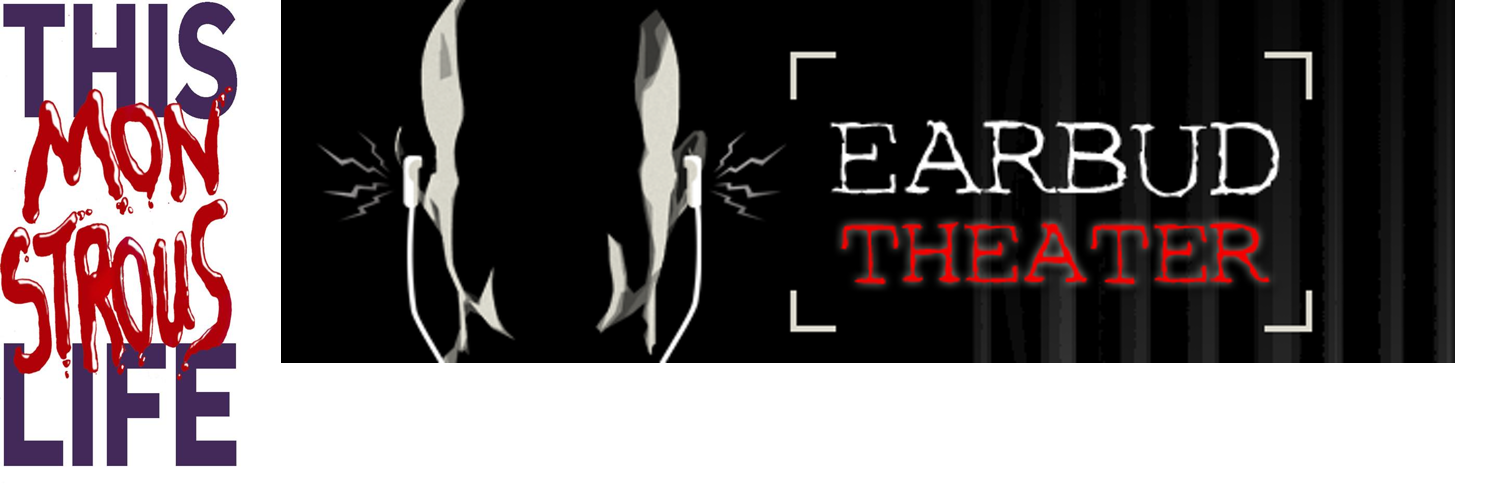Perhaps the best way to illustrate how I can use audio to help you tell your story is to tell you the story of how I helped someone else tell theirs. Earbud Theater asked me to provide most of the post production on their 2014 Holiday episode, This Monstrous Life. As a send-up of WBEZ's highly popular This American Life starring Ira Glass, this monster-eye view of those perplexing human holidays, hosted by Ira Slash, required a high degree of polish and production values in order to carry the gag. The first problem, though, was that writer/director Casey Wolfe found his usual studio unavailable and had to record in a less than ideal room. He faced noisy HVAC and even doors slamming shut in the background. But, as we know, the show must go on!
Audio restoration and repair:
Once we assembled our select takes from the recording session the next step was to repair some clipping, clean out the background noise, and reduce the room reverberation.
(If your listening room isn't very quiet I suggest listening to the samples on this page via headphones.)
I used the gold standard in audio repair software, iZotope RX 4 Advanced, to do the cleanup. It may not be magic, but sometimes it's indistinguishable from it. Its reputation as a "take saver" is well deserved.
Editing:
Once we had the selects ready to go it was time to tackle the biggest part of the job. This show is divided roughly in three parts: Opening, Act One, and Act Two. As chunks of each were cut together I exchanged audio files with the director so he could provide guidance. During this phase all we concentrated on were performance and timing. Next, the soundscapes and sound effects provided by The University of Texas at Austin Semester in Los Angeles program were laid in. In this excerpt Santa welcomes reporter Jonathan Moldstein to his workshop.
Sweetening:
To build on that excellent bed and create a workshop that really came alive, I sweetened it with several cut sound effects.
Foley:
Library effects only get you so far, and sometimes you need a specific performance in the sound. In Act Two Cthulu Jr. had to handle and open a wrapped present, so I built a prop and recorded the sound here in my own studio.
Music Editing:
Song choices were finalized and then cut into the show, back-timed and edited to seamlessly both start and end where needed.
Mixing:
By now I had a Pro Tools session with something north of 65 tracks in it, organized into premix busses for maximum flexibility and control. This is where the polish is put on the project, including applying the proper EQ, compression, and pan to the dialogue to either place it "on location" or give it that characteristic, NPR "in the studio" sound. The show opens like this:
Other things addressed in the mix include –
- Matching levels and EQ on dialogue that was cut together from multiple takes.
- Feathering music and effects transitions between scenes and segments.
- Panning sounds as needed for a convincing stereo portrayal of the scene.
- Applying (sometimes varying amounts of) reverb to properly place effects in the sound stage.
Dessert:
I suggested to Casey that we also send up the WNYC-style credits where listeners phone them in. He wrote a script and sent it out to the cast and they (as well as a few children) left them for me as voice mail. I repaired them to make them as legible as possible, then cut them together as the show closer. That was fun.
Mastering:
The final step in the process is a crucial one. This is where I make sure that the levels are all legal, there is no overmodulation, and that the show's overall loudness is up to snuff. I delivered the final mp3 file to Earbud, and you can hear the entire episode on iTunes or at Earbud Theater's page.
